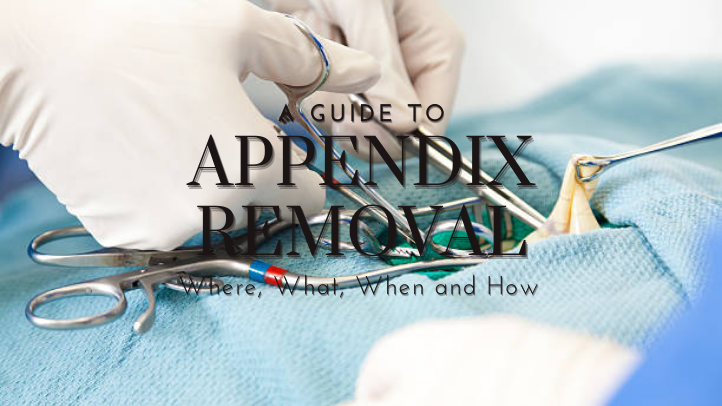
Appendix removal is necessary for patients with appendicitis. But, appendix treatment doesn’t have to be complicated – it just takes some time and patience! If you’re looking for some practical advice on how to go about your appendix treatment, this article is the perfect place to start. Appendix removal is a common medical procedure that can be performed to improve a patient’s health. This guide will outline the different types of appendices and when they should be removed, as well as provide information on where and how to remove them.
Appendix removal is a surgical procedure that is used to treat conditions such as appendicitis. It involves removing the appendix using either an open or laparoscopic technique. Appendix removal is typically performed on an outpatient basis, but can also be done in a hospital setting.
The decision to remove an appendix depends on the individual’s health and condition. If the appendix is found to be cancerous, it will need to be removed immediately. In most cases, however, if an individual has symptoms such as abdominal pain or fever, the appendix should be evaluated by a doctor.
The best time to remove an appendix is during the early stages of appendicitis, when the infection is mild and the appendix has not yet begun to swell. Appendectomy (the surgical removal of all or part of the Appendix) is usually preferred over appendicectomy with perforation (a tear in the Appendix that allows bacteria and fluid to enter the abdomen). However, there are circumstances where appendicectomy with perforation may be preferable, such as if there is significant bleeding following exploratory surgery or if there are other medical problems associated with appendicitis (for example, liver disease).
There are two main types of appendicectomy: open and laparoscopic. Open appendicectomy involves making a small incision in the lower stomach and then removing the appendix through this opening. Laparoscopic appendicectomy uses small instruments inserted through tiny openings in the side of your abdomen
There are three types of appendicitis:
Appendicitis is a condition that affects the appendix, a small, pea-sized organ located near the intestine. Symptoms of appendicitis can include:
Appendix removal is a common procedure that can be done in several ways. The most common way is through a surgery called an appendectomy. However, there are other methods available, such as using a laser or using a type of suction device.
The best time to have an appendix removed is usually when it begins to cause problems, such as pain or bleeding. However, it can also be removed at any time if the doctor thinks it’s necessary.
Once the appendix is removed, the doctor will likely prescribe antibiotics to prevent any infection from developing. If there was no cancer present in the appendix, there may not be any further treatment needed.
Appendix removal is a surgery that can be performed on either the left or right side of the body. This procedure is most commonly done to remove an appendix, but it can be used to remove other organs and tissues as well. Appendix removal is usually an outpatient procedure, although there may be some minor complications that may require hospitalization.
The decision to have an appendectomy (or any other surgery) should not be made lightly, as there are many potential risks and benefits associated with each option. If you are considering appendix removal, your doctor will discuss all of your options with you and help you make the best decision for your health.
There are three main types of appendectomies: open, laparoscopic, and robotic.
Each type of appendectomy has its own risks and benefits, so it is important to choose one that is best suited for your situation. Several different techniques can be used for appendix removal, so it is important to choose one that will provide the best results for you.
There are several things that you can do after appendix removal to help minimize the risks of future health problems. These include eating a healthy diet and getting regular exercise, both of which have been shown to help maintain overall health. Additionally, it is important to maintain good oral hygiene and to avoid drinking alcohol excessively. If you experience any symptoms after appendix surgery, such as fever, diarrhea, or abdominal pain, please contact your doctor immediately.
If you are looking for an excellent doctor who can help you remove your appendix, then Dr. Alok Ahuja is the perfect doctor for you. He is known for his expertise in this field and has worked with many patients over the years to successfully remove their appendices.If you are concerned about the possible risks involved in having your appendix removed, Dr. Ahuja will take care of all of the details for you. He will explain everything to you and answer any questions that you may have.If you are ready to have your appendix removed, then contact Dr. Alok Ahuja today and let him help you get through this process safely and successfully.
Copyright © 2025 Dr Ahuja Clinic. All Rights Reserved | Marketing by : WebHopers
Website Design by CSW Technologies